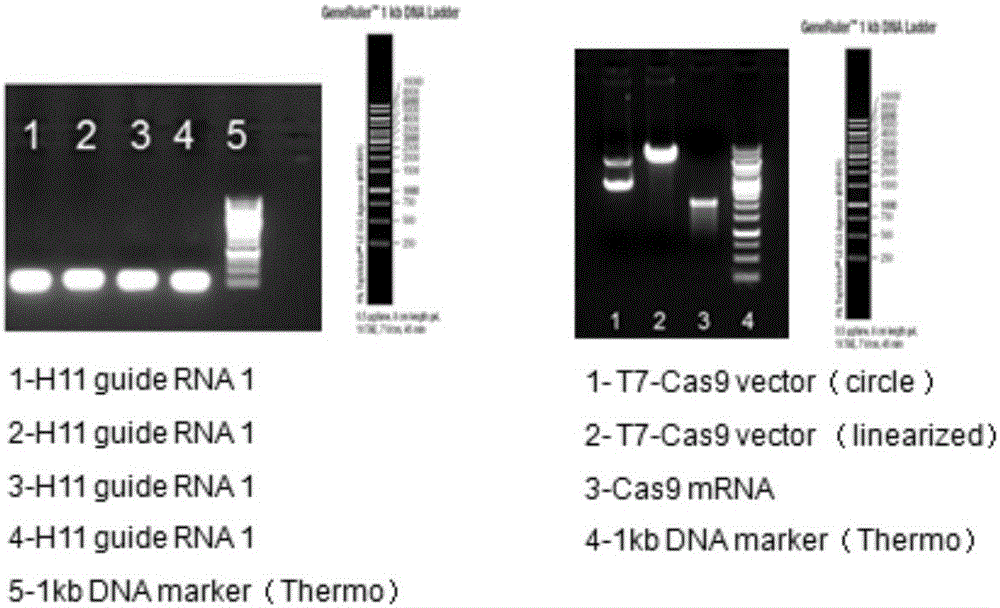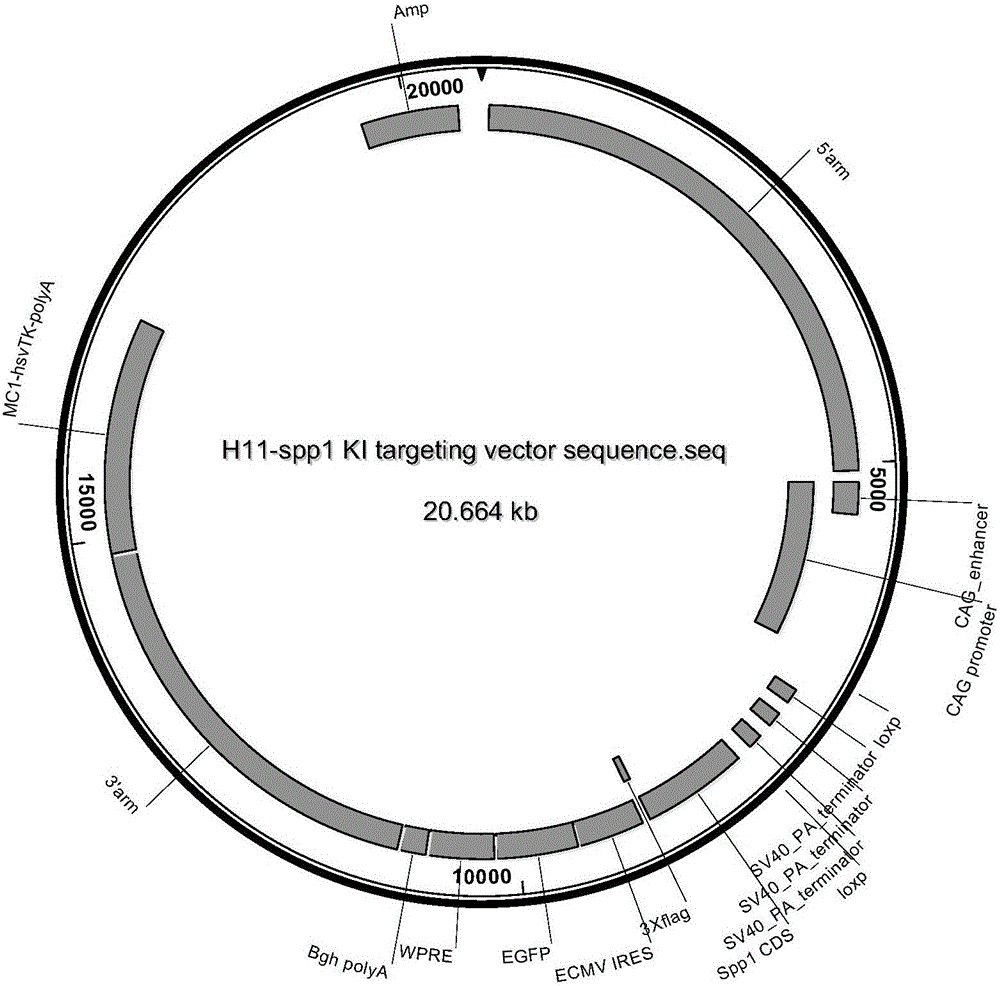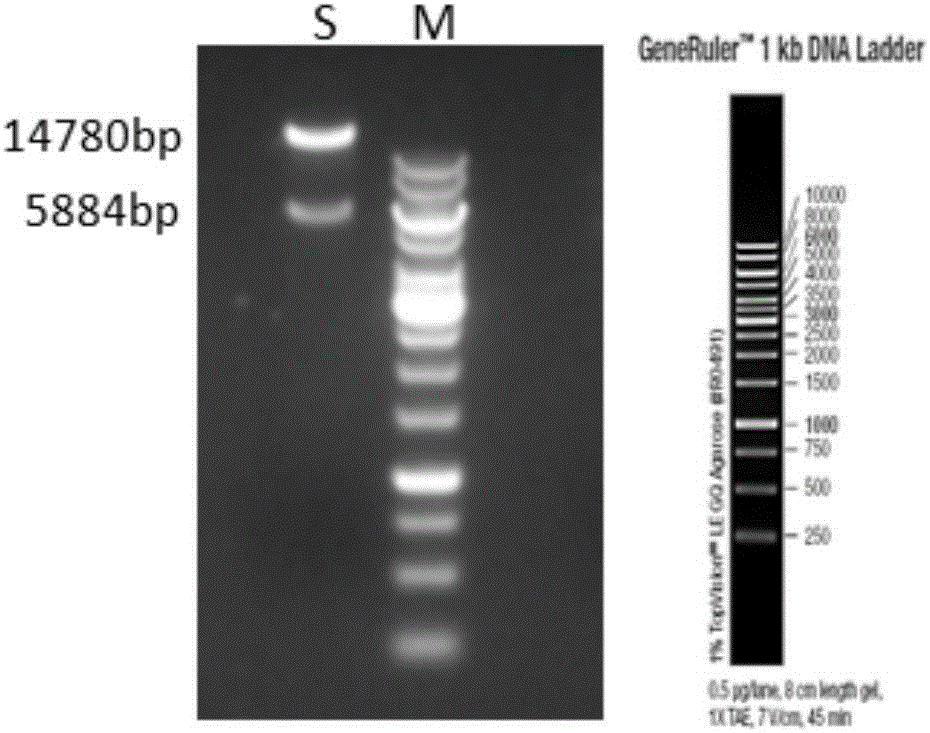H11 fixed-point knock-in heterozygous mice model of conditional overexpression Spp1 gene and construction method of H11 fixed-point knock-in heterozygous mice model of conditional overexpression Spp1 gene
A technology of mouse model and construction method, which is applied in the field of genetic engineering, can solve the problems of uncontrollable onset time and hinder the understanding of myc gene function, and achieve good controllability
- Summary
- Abstract
- Description
- Claims
- Application Information
AI Technical Summary
Problems solved by technology
Method used
Image
Examples
Embodiment 1
[0032] Example 1 Construction method of H11 site-directed knock-in heterozygous mouse model with conditional overexpression of Spp1 gene
[0033] Include the following steps:
[0034] (1) Obtain gRNA
[0035] gRNA1: 5'-ATGATGGCATCTAATGAGCTTGG-3'
[0036] (2), construction of homologous recombination plasmid
[0037] For a map of homologous recombination plasmids, see figure 2 , which contains all the elements of Table 1. SacI was used to identify the homologous recombination vector, and the identification results were as follows: image 3 As shown, the theoretical band sizes are 5884bp and 14780bp, indicating that the homologous recombination plasmid was successfully constructed.
[0038] Table 1 Elements of Homologous Recombination Plasmids
[0039]
[0040]
[0041] (3), construction of F0 generation mice
[0042] A total of 15 F0 mice were obtained by microinjection of fertilized eggs.
[0043] To identify the genotype of the F0 generation mice, the identific...
PUM
 Login to View More
Login to View More Abstract
Description
Claims
Application Information
 Login to View More
Login to View More - R&D
- Intellectual Property
- Life Sciences
- Materials
- Tech Scout
- Unparalleled Data Quality
- Higher Quality Content
- 60% Fewer Hallucinations
Browse by: Latest US Patents, China's latest patents, Technical Efficacy Thesaurus, Application Domain, Technology Topic, Popular Technical Reports.
© 2025 PatSnap. All rights reserved.Legal|Privacy policy|Modern Slavery Act Transparency Statement|Sitemap|About US| Contact US: help@patsnap.com



